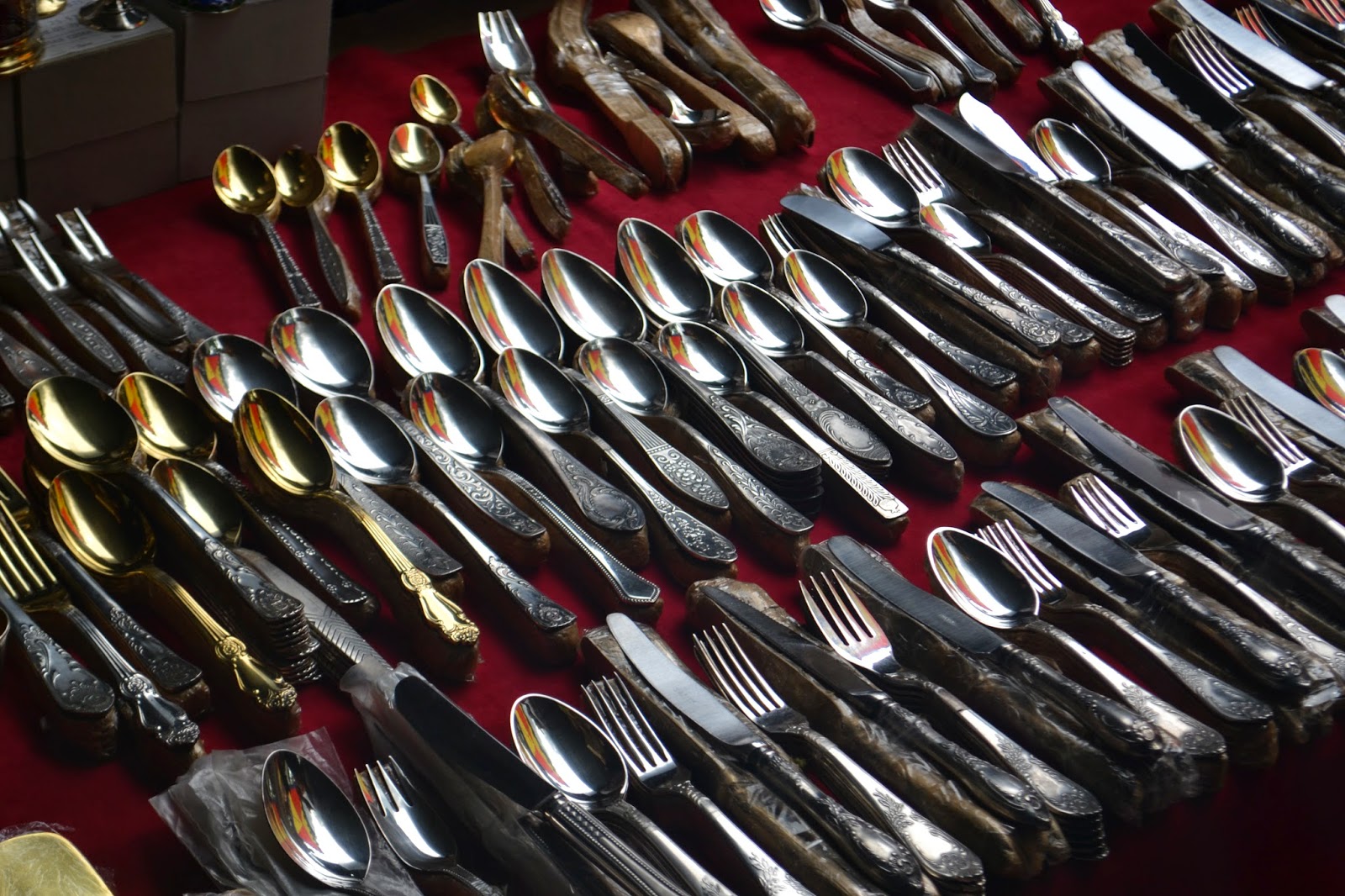We also went to Geghardavank or "the Monastery of the Spear" where the spear which wounded Christ at the crucifixion was housed for many centuries. It encompasses a diverse collection of churches, some dug entirely out of rock, others partial caves, some elaborately carved, others rustic and simple, all surrounded by high mountain cliffs. Of particular interest was one upper chapel, completely carved out, with the most exquisite accoustics. The only other time I've experienced such a space that became as a musical instrument was at the Roman Catholic Church of St. Anne's in Jerusalem. It was spellbinding.
 |
| Hubby visited this very spot during his LDS mission nearly 20 years ago. |
 |
| Armenians are born with the gift of salesmanship. We were practically accosted on our way back to the bus. We finally relented and bought the biggest heaviest hunk of sweetbread I've ever seen. Good stuff. |
And speaking of the bus, I'll take just a moment here to mention that we were on a group tour, which included the use of a tour bus. Here you can get a taste of how things went: this was taken while barreling down the road at a good clip (barely captured the shot), just before he passed the above herd of cows ON THE LEFT.
We were worried about the many hours we'd spend with the kids cooped up on the tour bus, but remarkably this little guy LOVED the bus. He never wanted to get off. He loved looking out the window and the freedom of moving from seat to seat. He talked about it all night long, both nights.
We stayed in the center of Yerevan. The buildings there have a very different architectural style than in Georgia because they use the local multi-colored stone. By contrast, much of the construction in Georgia is poured concrete. And while I'm on the subject of comparisons, I'd just add that in general Yerevan is cleaner and has more polite drivers than Tbilisi. Unexpected.
The town was all decked out for the visit of the French President, François Hollande, the following week. He actually came to Georgia also and visited our own French School, but only French passport holders were invited :(
That evening we enjoyed the music and lights display at the fountains in the center of town. A few local friends and a few ice cream cones later made it a perfect night.

















































